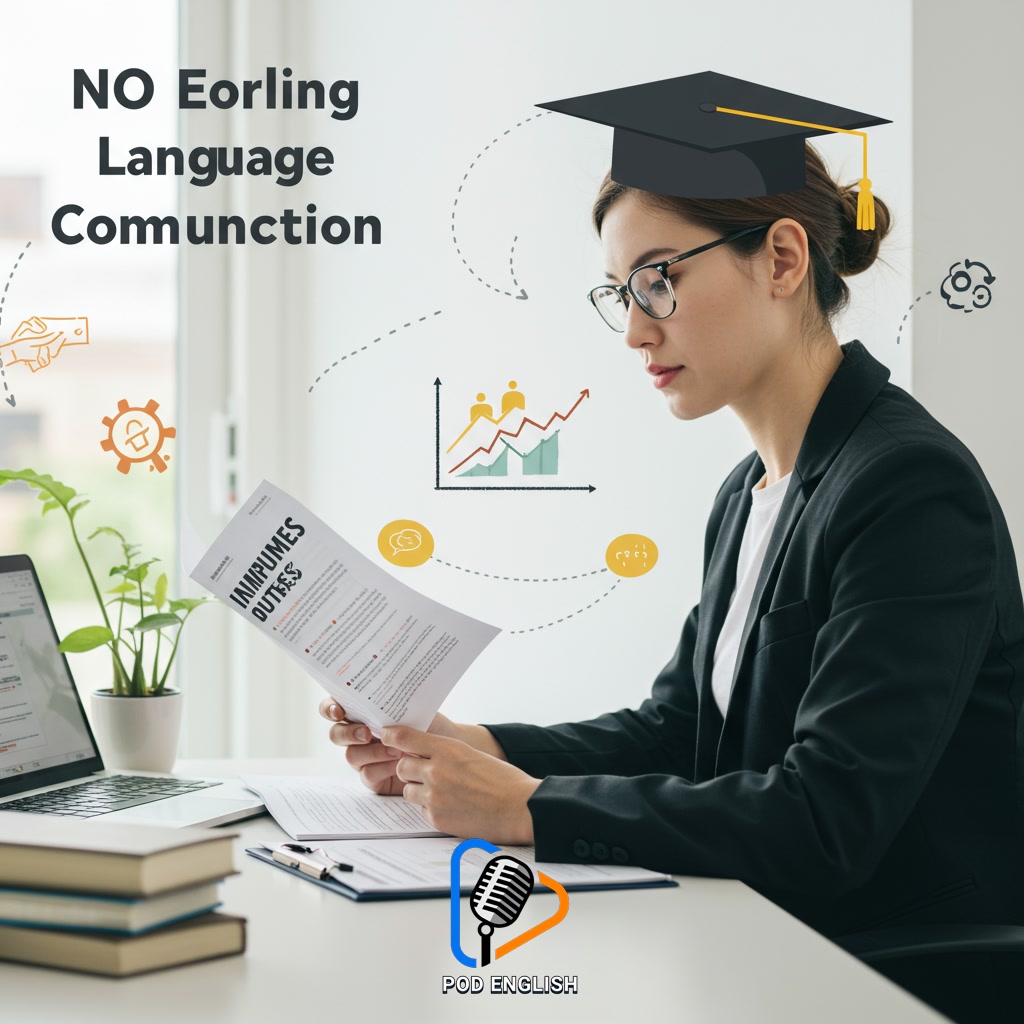Learn English
Consulting Success: Preparing for English Clients

This content explores the strategies for achieving success in consulting when working with English-speaking clients. It outlines the necessary preparation steps to ensure effective communication and build strong professional relationships. The material emphasizes the importance of developing language proficiency and cultural understanding to thrive in international consulting environments and deliver successful client engagements.
Table of Contents
- Section 1: The Crucial Role of English in Global Consulting
- Section 2: Assessing Your Current English Proficiency for Client Interactions
- Section 3: Targeted English Learning: Vocabulary and Phrases for Consulting Success
- Section 4: Mastering Professional Communication and Cultural Nuances
- Section 5: Building Confidence Through Practice and Real-World Scenarios
- Section 6: Handling Challenges and Misunderstandings with English-Speaking Clients
- Section 7: Continuous Improvement: A Long-Term Approach to Learning English for Consulting
Section 1: The Crucial Role of English in Global Consulting
In the dynamic world of global consulting, English serves as the indispensable bridge connecting professionals and clients across diverse linguistic backgrounds. As businesses expand internationally, consultants are increasingly required to communicate effectively with clients, partners, and colleagues from various countries. English has emerged as the de facto language of international business, making proficiency in it a fundamental requirement, not merely an advantage. Strong English skills enable consultants to clearly understand client needs, articulate complex solutions, negotiate terms, and build rapport, regardless of geographical location. This linguistic fluency is crucial for successful project execution, fostering trust, and opening doors to valuable international engagements. Mastering English is therefore a critical investment for any consultant aspiring to thrive in the global marketplace, directly impacting their ability to deliver impact and achieve success.

Section 2: Assessing Your Current English Proficiency for Client Interactions
Building on English serving as the indispensable bridge in global consulting, the fundamental next step is to honestly and accurately assess your current English proficiency level specifically for client interactions. This assessment goes beyond basic grammar and vocabulary; it delves into your ability to understand nuanced discussions, articulate complex ideas clearly, listen actively to client needs, and respond appropriately in real-time professional settings. Evaluating your speaking fluency, listening comprehension, and confidence in using business English is crucial. This self-evaluation might involve reflecting on past communication experiences, taking practice tests focused on professional contexts, or even recording yourself speaking. Pinpointing your strengths and identifying areas that require improvement is vital for tailoring your learning efforts effectively, ensuring you are well-prepared to communicate confidently and build strong relationships with English-speaking clients.

Section 3: Targeted English Learning: Vocabulary and Phrases for Consulting Success
Following your initial proficiency assessment, the crucial next step towards mastering English for client interactions is targeted learning. This involves moving beyond general language skills to focus specifically on the vocabulary, phrases, and idiomatic expressions commonly used in the consulting industry. Prioritize learning terms related to business strategy, financial analysis, project management, and client communication. Practice using formal and professional language appropriate for meetings, presentations, and written proposals. Understanding and correctly applying this specialized terminology allows you to articulate complex ideas with precision, build credibility, and ensure clear, unambiguous communication with English-speaking clients, which is fundamental to successful consulting engagements.

Section 4: Mastering Professional Communication and Cultural Nuances
Moving beyond foundational language skills, mastering professional communication involves refining your ability to articulate complex ideas clearly, listen actively, and engage in persuasive dialogue specific to the consulting context. This includes understanding and appropriately using professional vocabulary, common business idioms, and polite yet direct phrasing essential for client interactions. Equally critical is developing cultural intelligence. This means recognizing and respecting the diverse communication styles, non-verbal cues, and business etiquette prevalent among different English-speaking client groups. Effective cultural understanding prevents misunderstandings and builds trust, ensuring your targeted English learning translates into successful, respectful, and productive relationships and project outcomes with international clients.

Section 5: Building Confidence Through Practice and Real-World Scenarios
True confidence in using English professionally for consulting doesn’t just come from studying grammar and vocabulary; it’s built through active practice and simulating real-world client interactions. Engaging in role-playing scenarios, conducting mock meetings, and practicing presentations allow you to apply your learning in a safe environment. These exercises help you become more comfortable articulating complex ideas, responding to questions spontaneously, and managing the flow of conversation, all crucial aspects of effective communication with English-speaking clients. Regularly putting your language skills to the test in these practical settings is essential for solidifying your understanding and developing the fluency needed to navigate challenging consulting situations with poise.

Section 6: Handling Challenges and Misunderstandings with English-Speaking Clients
Building on simulated practice, real-world consulting with English-speaking clients inevitably presents challenges and potential misunderstandings. These can stem from language nuances, cultural differences, or simply complex information. To navigate this, active listening is crucial – pay close attention not just to words but also tone and non-verbal cues. Don’t hesitate to ask clarifying questions like “Could you please elaborate on that?” or “Just to confirm, are you saying…?” Rephrasing the client’s point in your own words helps confirm understanding. If you encounter unfamiliar vocabulary or concepts, politely ask for an explanation. Using clear, simple English yourself and avoiding jargon can prevent confusion. Remaining patient and professional, even when communication is difficult, is key to maintaining trust and resolving issues effectively.

Section 7: Continuous Improvement: A Long-Term Approach to Learning English for Consulting
Building on simulated practice and real-world experiences, mastering English for consulting is fundamentally a journey of continuous improvement. Challenges and misunderstandings, as encountered in client interactions, serve as crucial learning opportunities. A long-term approach means actively seeking feedback on your communication, identifying areas for language refinement, and dedicating consistent effort to practice. This isn’t about reaching a perfect level, but rather about steadily enhancing your vocabulary, grammar, pronunciation, and cultural fluency over time. Embracing this ongoing learning process ensures you can adapt to diverse client needs, navigate complex discussions more effectively, and build stronger, more trusting professional relationships, leading to greater success in your consulting career.














